End-of-year DNSFilter Report: What We Learned From DNS Stats
by Serena Raymond on Jan 4, 2022 12:00:00 AM
As we ring in the new year, we wanted to take a look back at internet traffic over the last 365 days—along with all of the different discoveries we made.
Our DNS data helped us uncover a lot of interesting trends in 2021, and we spent the most time on crypto by far. Our CEO, Ken Carnesi, explored domains related to the Monero cryptocurrency and what that means for the future of crypto. We also did our best to declare a winner in the streaming wars, share every single need-to-know DNS stat, and explain why Facebook went down (and why it took so much of the internet with it).
We saw an unexplained rise in TikTok traffic, and we hypothesized that a new feature was responsible. Since our investigation, they’ve become the No. 1 most-trafficked site according to recent rankings.
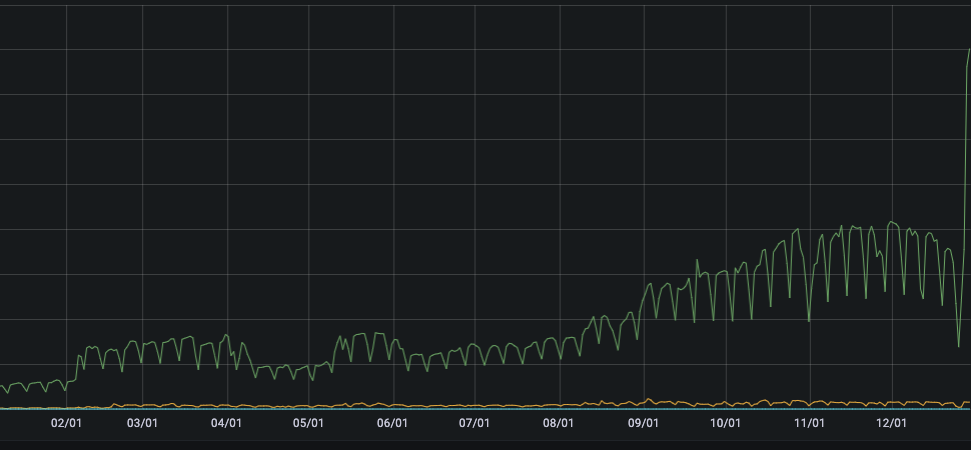
That initial spike we saw in February is now nothing compared to the steady growth TikTok has seen on our network, particularly since September of this year. After traffic plummeted on Christmas Day, traffic skyrocketed to double its usual traffic between the 26th and 29th of December.
Could this be another influx in DNS queries related to an update? Or is that report correct, and this is the new normal. If we include the TikTok ecosystem domains associated with the app as a single domain, it would be the No. 1 domain on our network.
But doing that would be unfair to Microsoft, Apple, and the other top-placing sites that have an ecosystem all their own.
So what were the top sites on DNSFilter in 2021? And what did we block the most? Let’s find out.
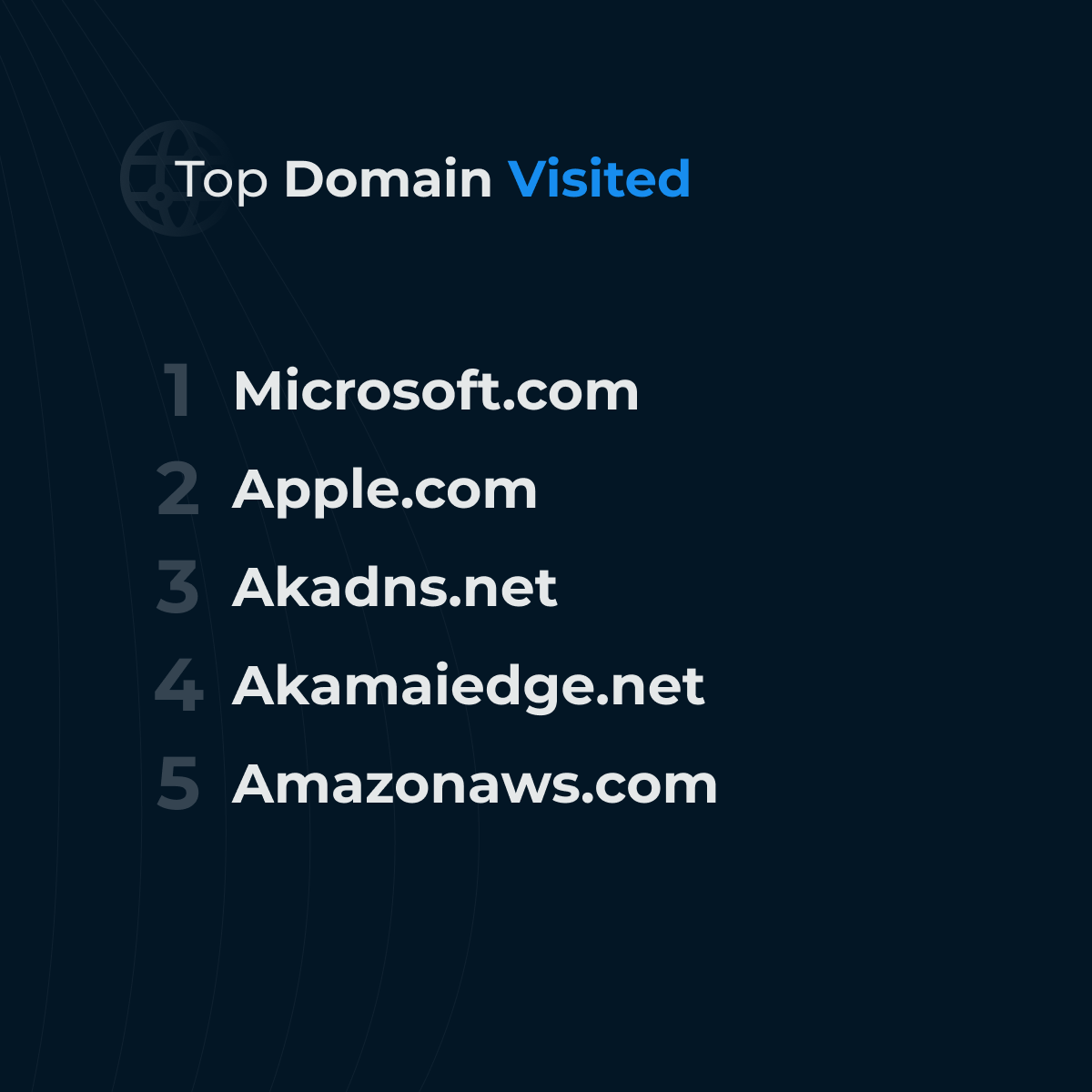
The top domain of 2021 was Microsoft, followed closely by Apple, two different Akamai domains, and finally Amazon. It shouldn’t be too surprising that Microsoft is at the top of the list since it powers so much web infrastructure related to our working lives.
As for the most-blocked domains, the numbers aren’t all that different…
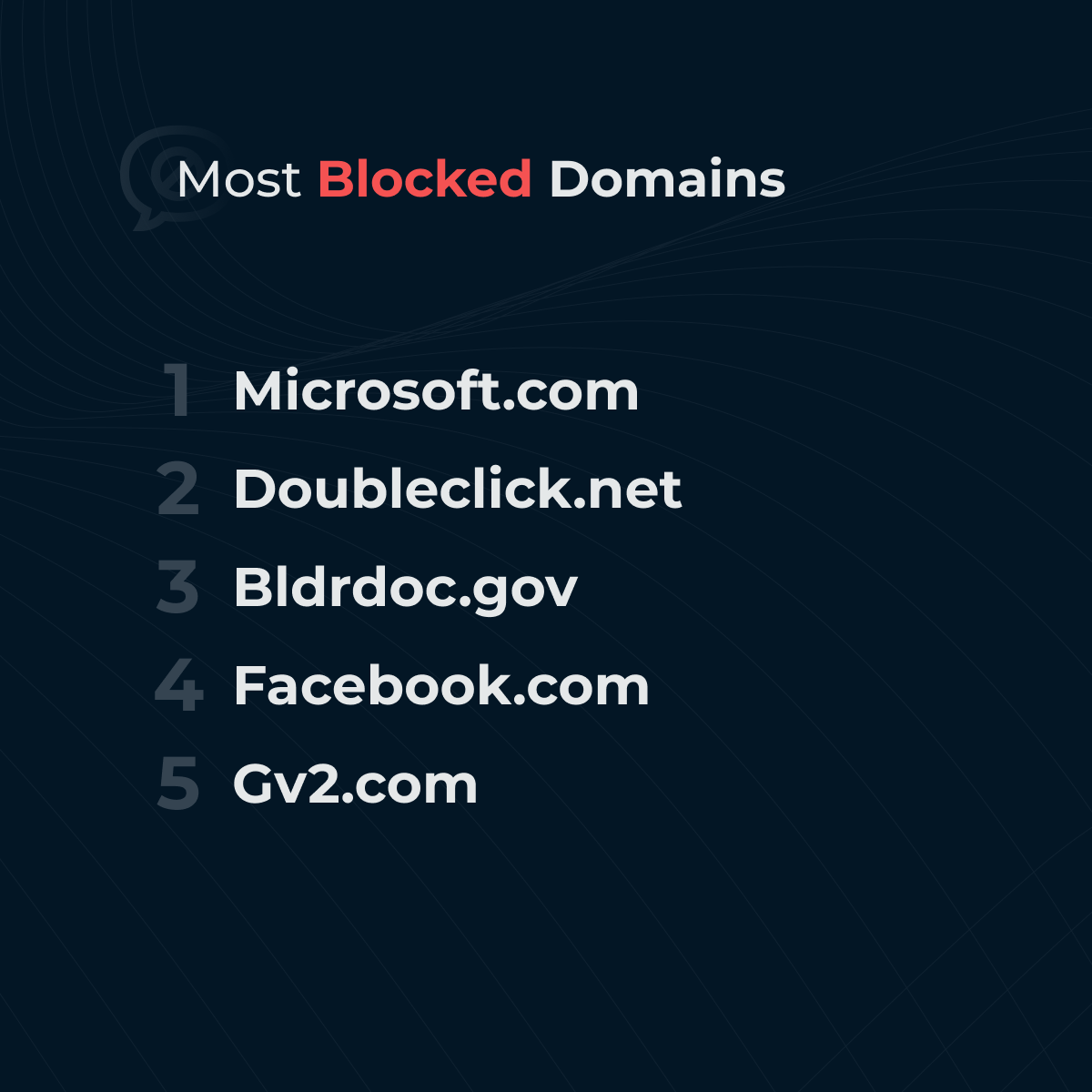
Microsoft is such a popular domain, plenty of our users block it. They also block ad-related domains like Doubleclick, social media sites like Facebook, government sites like Bldrdoc.gov, and shopping sites like Gv2.com.
These sites relate to our most-blocked categories (excluding threats):
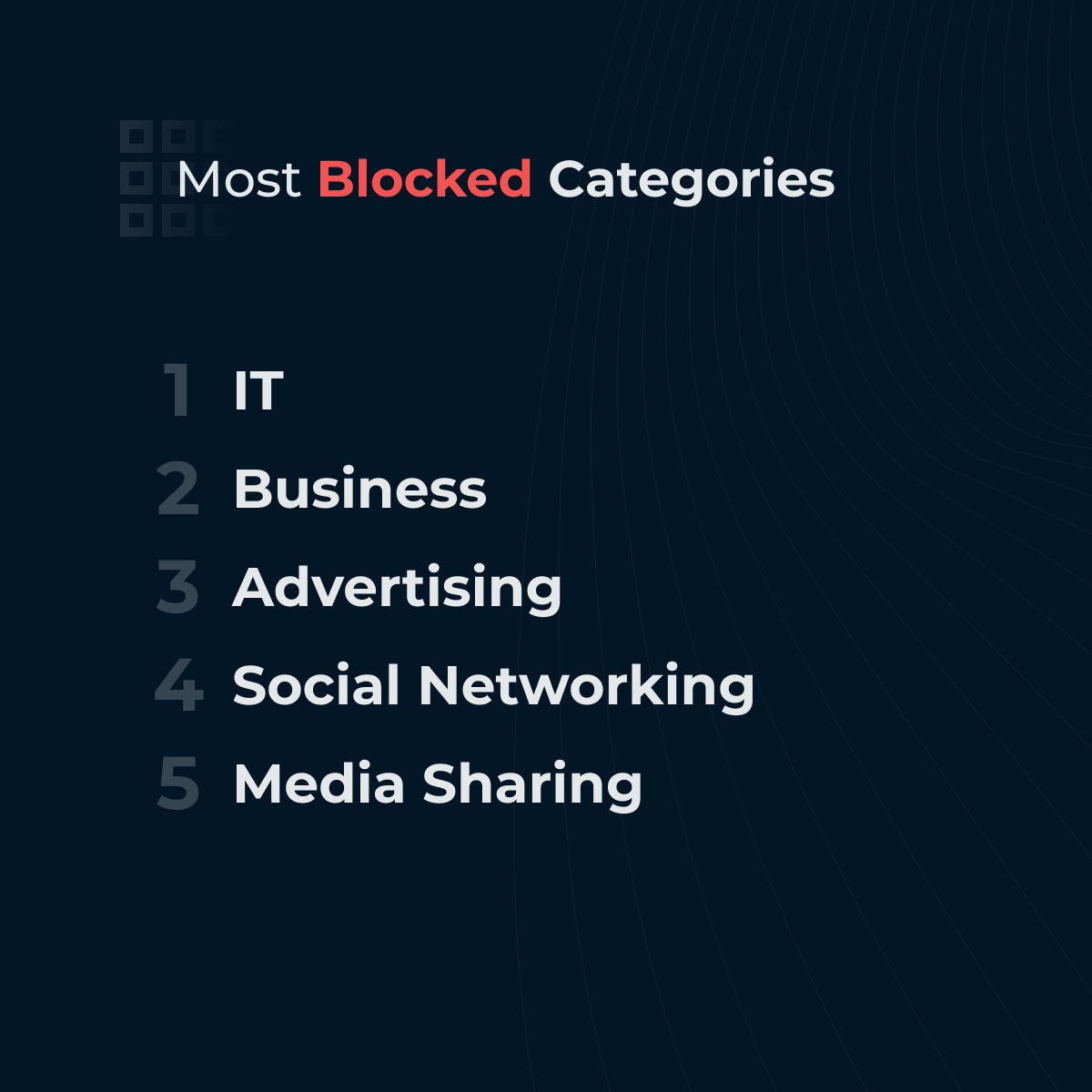
IT, business, advertising, social networking, and media sharing topped the lists of categories our users wanted to block. Now as for threats…
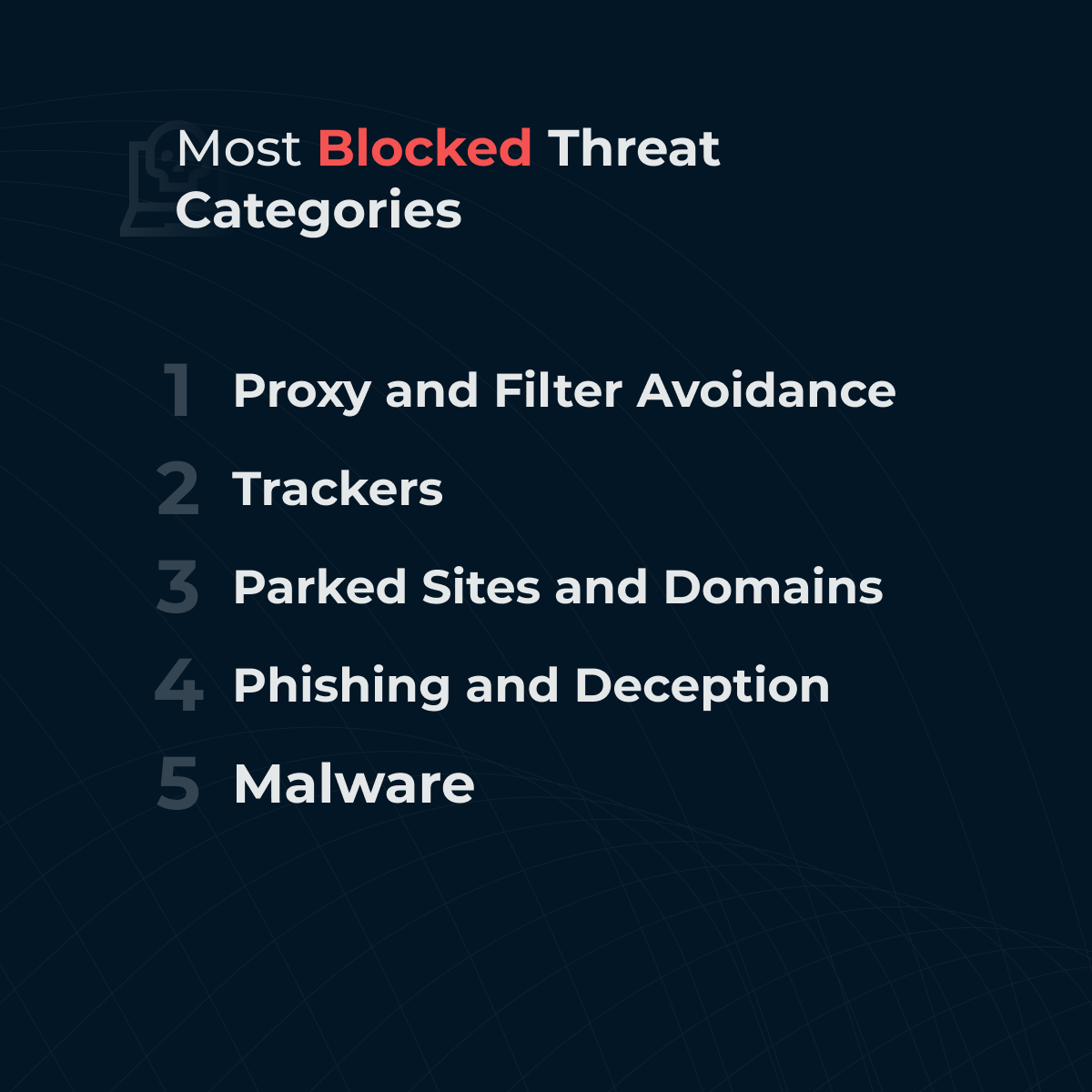
It’s not that surprising that there are more proxy sites than there are phishing sites in 2021, so we wind up blocking more of them. Our users seem to be concerned with blocking the ability to bypass filtering (we can’t blame them) as well as privacy.
When you tall it all up from January through November 2021, this is how many threats we blocked:
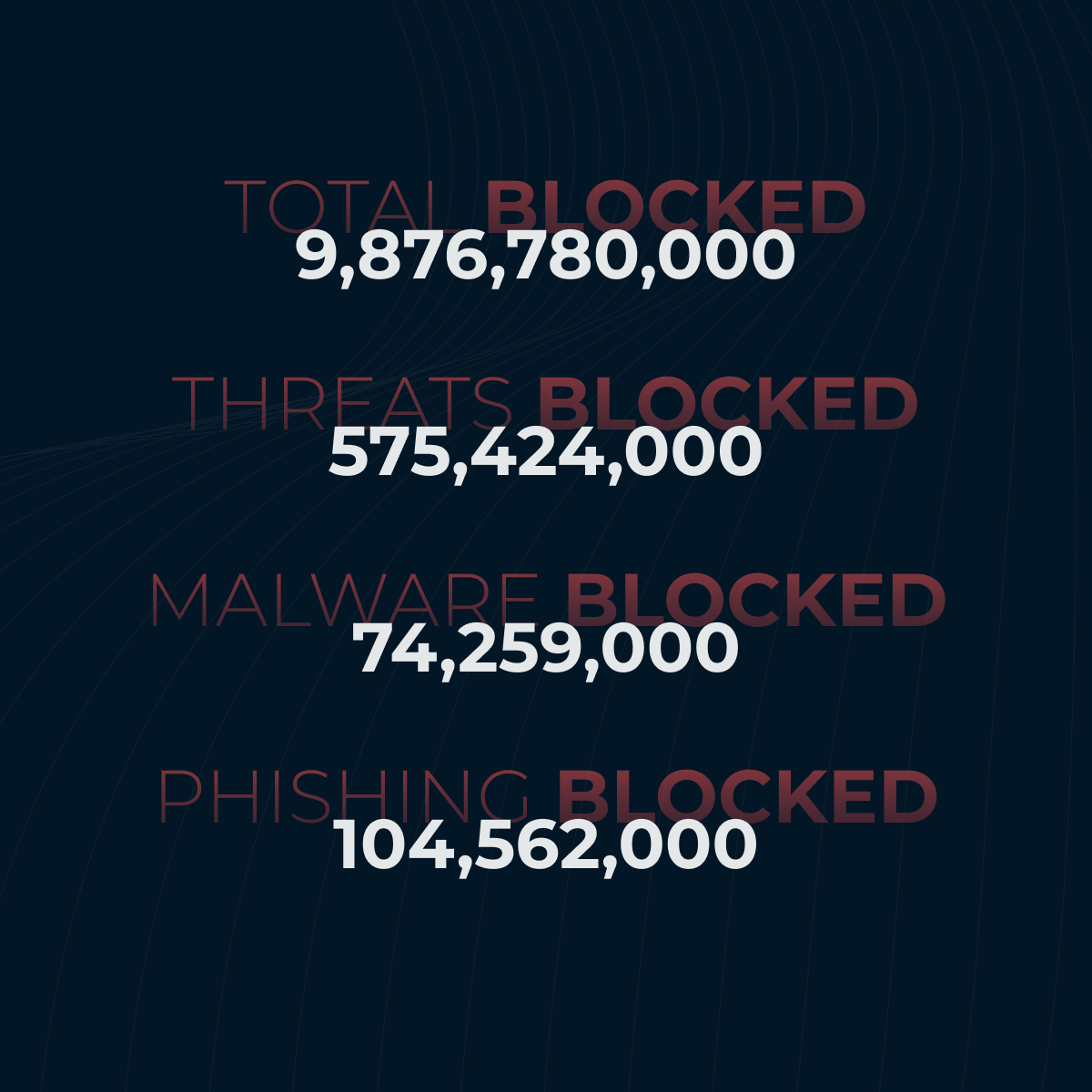
In December alone, not included in the above numbers, we blocked nearly 50 million threats.
We expect more of the same in 2022. The threats will evolve, and we’ll be here to protect you from them.
Want a downloadable full threat report of 2021? Make sure to check it out the DNSFilter Domain Threat Report here!
 6 Security-Focused New Year’s Resolutions for 2026
6 Security-Focused New Year’s Resolutions for 2026
The start of a new year is the perfect time to reset habits—not just personal ones, but digital habits too. Cybercriminals don’t need zero-days or nation-state tooling if we keep handing them easy wins through reused passwords, oversharing, and rushed reactions.
 Inside Business Email Compromise Scams: How to Protect Your Business
Inside Business Email Compromise Scams: How to Protect Your Business
The Scam That Outsmarts Awareness Training
It starts with a routine email.
 How to choose the right DNS provider for the job
How to choose the right DNS provider for the job
Choosing a DNS provider used to be about speed. Today, it’s about security. The Domain Name System (DNS) has evolved from a simple directory of the internet into a critical control point for visibility, compliance, and protection. The right provider can identify and block malicious activity before it ever reaches your endpoints, keeping your users safe—no matter where they connect. That’s why DNS filtering has become one of the most effective, ...


